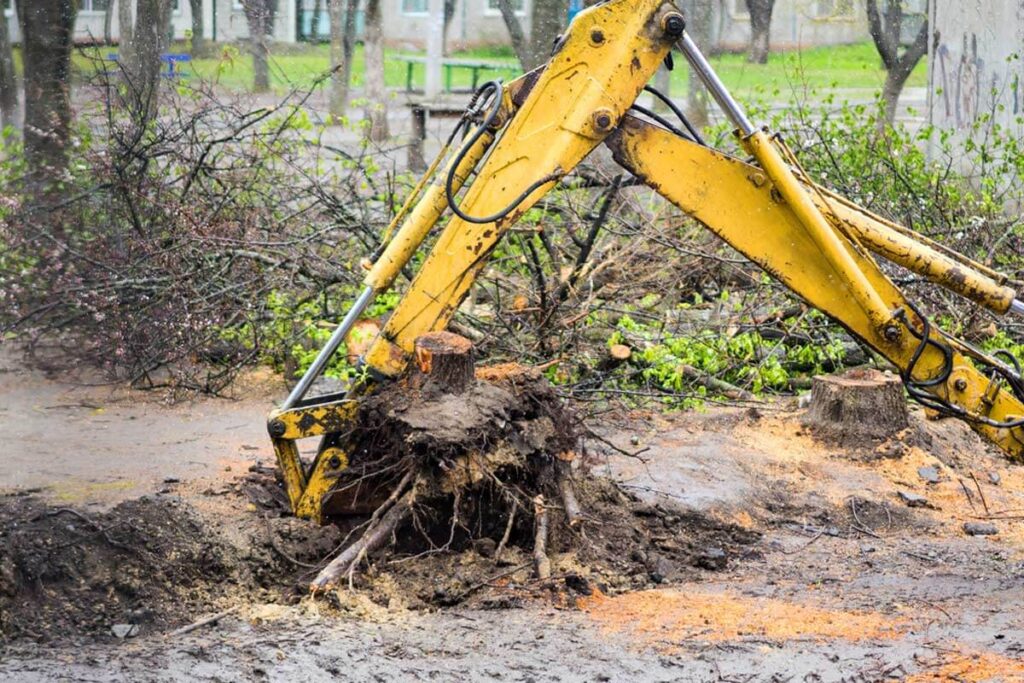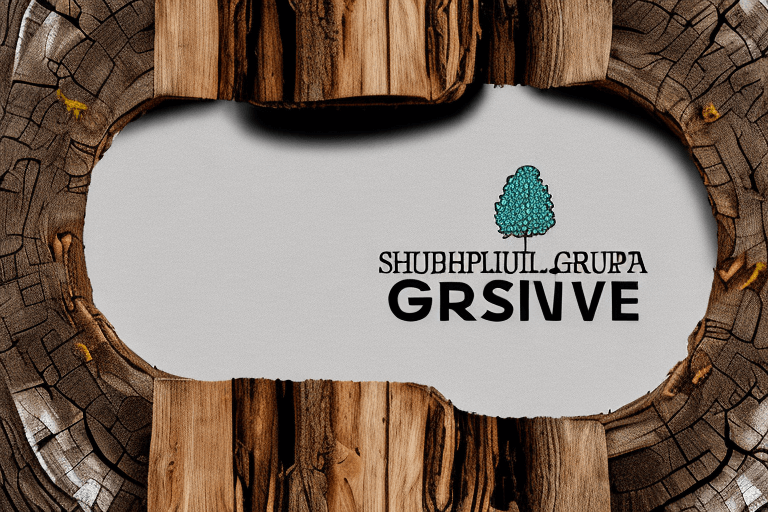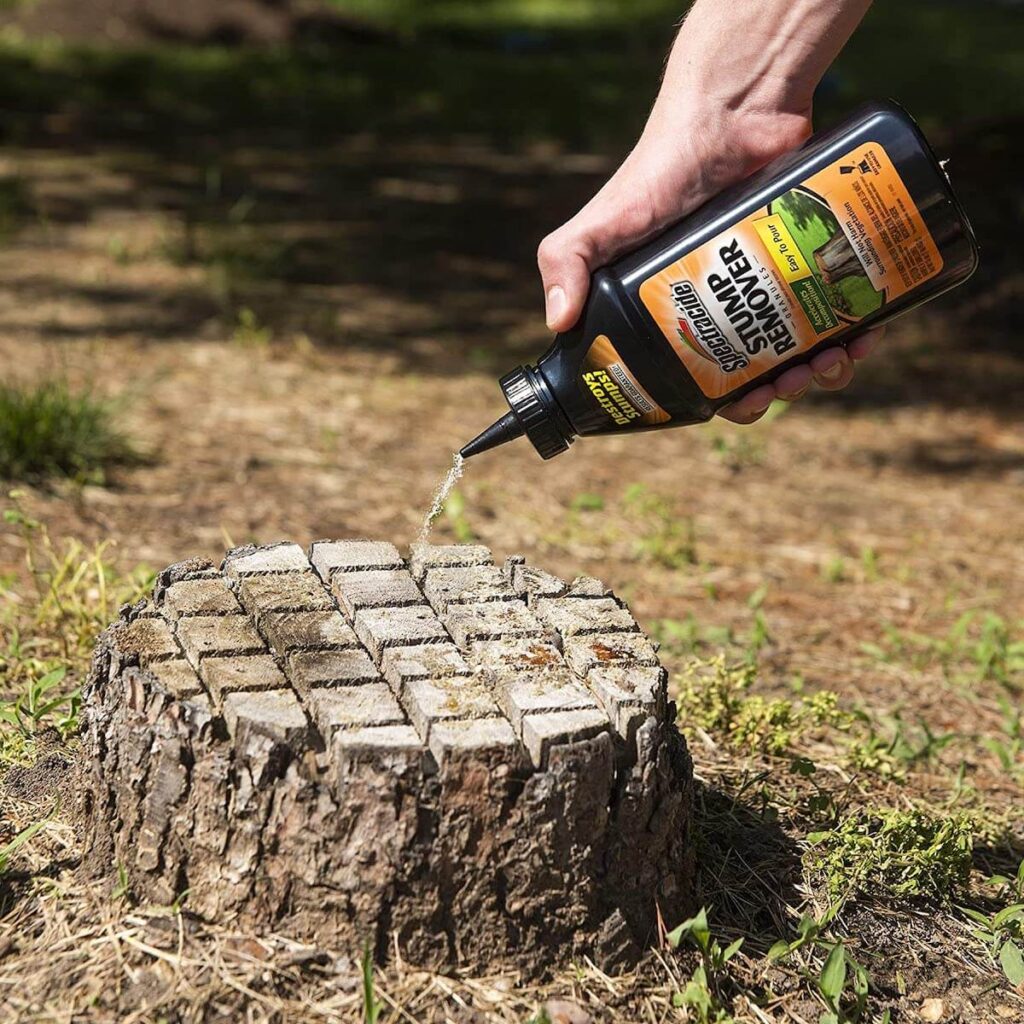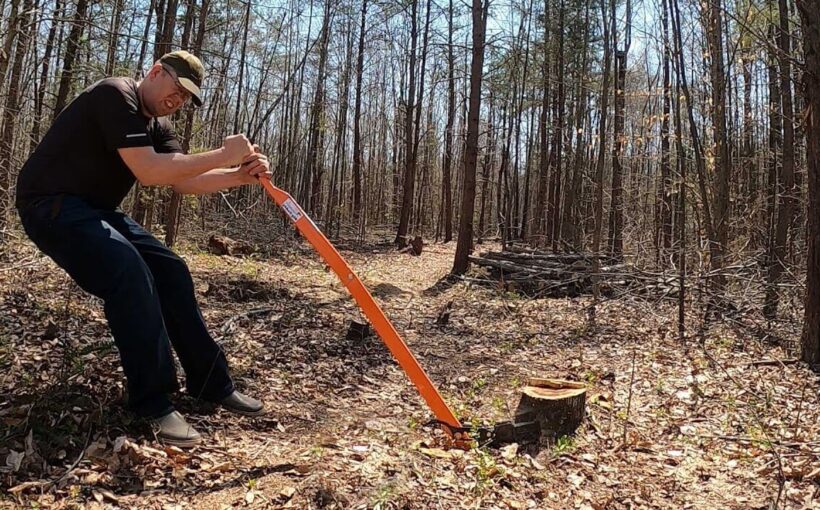Tree stumps can be a troublesome eyesore in your landscape. Not only do they detract from the beauty of your yard, but they can also pose safety hazards. Removing tree stumps is a common task for homeowners, and luckily, there are several methods available to get the job done. In this article, we will explore different tree stump removal methods, including grinding, chemicals, and more.
Understanding the Need for Tree Stump Removal
A tree stump left behind after a tree has been cut down can have a significant impact on your landscape. Firstly, stumps can impede the growth of new plants and make it difficult to mow or maintain your lawn. Additionally, tree stump removal is necessary beacuse they can attract pests such as termites and ants, which can spread to other areas of your yard or even your home. Lastly, tree stumps can be a tripping hazard, especially if they are hidden by grass or other vegetation.
The Impact of Leftover Stumps on Your Landscape
When you leave a stump in your yard, it can interfere with the growth of new plants. The roots of the stump can continue to draw nutrients and water from the soil, depriving nearby plants of essential resources. This can hinder the overall health and appearance of your landscape. In addition, the presence of a stump can make it challenging to mow or maintain your lawn, creating an uneven and unkempt look.
Furthermore, stumps can become a breeding ground for pests. Termites, ants, and other insects are attracted to decaying wood, and a tree stump provides an ideal environment for them to thrive. Once these pests infest the stump, they can spread to other parts of your yard, causing further damage to your plants and potentially infiltrating your home.
See also: Why Tree Stump Removal Matters

Moreover, the decomposition process of a tree stump can take several years, depending on the type of tree and environmental conditions. During this time, the stump can become an eyesore in your yard, detracting from the overall beauty of your landscape. It can also serve as a reminder of the tree that once stood there, which may not be desirable if the tree was removed due to disease, damage, or other reasons.
Lastly, tree stumps can pose a safety risk, particularly if they are in areas with foot traffic. They can be easily overlooked and become tripping hazards, especially if they are covered by grass or other vegetation. Children playing in the yard or guests visiting your home may accidentally stumble upon a hidden stump, resulting in injuries. Removing stumps will not only eliminate the risk of injuries but will also make your yard a safer place for you, your family, and your guests.
In conclusion, tree stump removal is essential for maintaining a healthy and visually appealing landscape. By eliminating stumps, you can promote the growth of new plants, prevent pest infestations, enhance the safety of your yard, and improve the overall aesthetics of your outdoor space. So, don’t overlook the importance of tree stump removal and take the necessary steps to ensure a stump-free environment.
Overview of Tree Stump Removal Methods
When it comes to removing a tree stump, you have several options to choose from. Each method has its advantages and considerations, so it’s essential to understand them before deciding which approach to take.
Factors to Consider When Choosing a Removal Method
Before diving into the specific removal methods, it’s essential to consider various factors that will influence your decision. One crucial consideration is the size of the stump. Larger stumps may require more labor-intensive methods or professional assistance. Another factor to consider is the number of stumps you need to remove. If you have multiple stumps, it may affect your decision to opt for a more efficient method.
The location of the stump is also a critical factor to think about. Stumps that are close to structures, such as houses or fences, may require extra caution during the removal process. You need to ensure that the removal method you choose does not pose any risk to nearby structures or cause damage to them. Additionally, the proximity of the stump to utility lines, such as electrical or plumbing lines, should be taken into account. It’s crucial to avoid any accidental damage to these lines during the removal process.
Furthermore, the type of tree that the stump belongs to can impact your decision. Different tree species have varying root systems, and some may be more challenging to remove than others. For example, trees with deep and extensive root systems may require more effort and specialized equipment for complete removal.
Consider your budget and the amount of time you are willing to invest in the removal process. Some methods may be more cost-effective but require more time and effort on your part. On the other hand, if you are willing to spend more money, you may be able to hire professionals who can efficiently remove the stump for you, saving you time and effort.

It’s also worth considering the environmental impact of each removal method. Some methods may involve the use of chemicals or machinery that can harm the surrounding ecosystem. If you prioritize eco-friendliness, you may want to explore alternative methods that minimize environmental damage.
Lastly, think about the future use of the area where the stump is located. If you plan to use the space for landscaping or construction purposes, you may need to ensure that the removal method leaves the area clear of any remaining roots or debris that could hinder your plans.
Grinding as a Tree Stump Removal Method
Stump grinding is one of the most popular methods for removing tree stumps. It involves using a specialized machine called a stump grinder to grind the stump below ground level. This method offers several benefits, but it also has its drawbacks.
The Process of Stump Grinding
Stump grinding typically involves a two-step process. Firstly, the majority of the stump is ground down using a rotating cutting wheel. The grinding machine is operated by a professional or a skilled homeowner who carefully controls the depth and speed of the grinding. Once the stump is ground down to a certain level, the excess wood chips and debris are cleared away.
In the second step, the remaining portion of the stump is further ground down until it is below ground level. This ensures that the stump is entirely removed, leaving only wood chips and soil behind. These wood chips can be used as mulch in other areas of your yard or disposed of appropriately.
Pros and Cons of Stump Grinding
Stump grinding offers several advantages over other removal methods. Firstly, it is a relatively quick process compared to some alternatives. Depending on the size of the stump, grinding can be completed within a few hours. Additionally, stump grinding is less invasive than other methods, as it doesn’t require digging up the entire stump or extensive root systems.
However, stump grinding also has its limitations. One drawback is that it doesn’t remove all the roots, only the visible portion of the stump. While this may not be an issue for most homeowners, if you plan to replant in the same area, there may still be leftover roots that can interfere with the growth of new plants.
Another consideration is the cost. Stump grinding can be more expensive than some other methods, particularly if you need to hire a professional. However, depending on your location and the size of the stump, there may be rental options available for the required equipment.
Chemical Stump Removal Techniques
If you prefer a less labor-intensive approach, chemical stump removal may be an option worth considering. This method involves using chemicals to accelerate the natural decomposition process of the stump.
How Chemical Stump Removers Work
Chemical stump removers typically contain potassium nitrate, which acts as an accelerant. The chemicals are applied to the stump, either by drilling holes or directly onto the surface. Over time, the potassium nitrate will break down the wood fibers, making the stump softer and more manageable to remove.
Once the stump has become sufficiently rotted, it can be easily chopped or pulled out of the ground. Chemical stump removal is a relatively slow process, taking several weeks or even months to complete. However, it requires minimal physical effort compared to other methods.
Safety Measures for Using Chemicals
While chemical stump removers are generally safe to use, it’s important to follow safety precautions. Always read and follow the instructions provided by the manufacturer carefully. Wear protective clothing, including gloves and goggles, when handling the chemicals. Keep children and pets away from the treated area to avoid potential ingestion or contact with the chemicals. Additionally, be sure to dispose of any leftover chemicals according to local regulations.
Other Tree Stump Removal Methods
In addition to grinding and chemical removal, there are a few other unconventional methods to consider for tree stump removal.
Natural Decomposition
If you are not in a hurry to remove the stump, natural decomposition is an option. This method involves allowing the stump to break down naturally over time. The decomposition process is aided by the natural activity of fungi, bacteria, and insects. However, it can take several years for a stump to fully decompose, depending on its size and condition.
During this time, it’s important to avoid adding soil or other materials to the stump, as this can slow down the decomposition process. You can encourage decomposition by drilling holes into the stump and filling them with water and nitrogen-rich materials, such as plant fertilizer.
Burning the Stump
Burning the stump is another method to consider. This technique involves igniting the stump and allowing it to burn down completely. It’s important to note that burning stumps may not be allowed in some areas due to fire safety regulations. Additionally, burning a stump can be hazardous, so extreme caution should be exercised if you choose this method. It’s recommended to consult with local authorities and professionals before attempting to burn a stump.

Hiring Professionals for Tree Stump Removal
While some homeowners may prefer a do-it-yourself approach, others may prefer to hire professionals for tree stump removal. There are several situations where professional assistance may be beneficial.
When to Consider Professional Stump Removal
If you have large stumps or a significant number of stumps to remove, hiring professionals can save you time and effort. Professional stump removal services have the necessary equipment and expertise to handle even the most challenging removal projects. Additionally, if the stump is located near structures or obstacles, professionals can ensure the removal is done safely, minimizing potential risks.
What to Expect from a Professional Stump Removal Service
When you hire professionals for stump removal, they will typically assess the situation and provide you with an estimate. The cost will depend on factors such as the size and number of stumps, difficulty of access, and any potential obstacles. Once the quote is agreed upon, the professionals will schedule a time to carry out the removal, taking into account your preferences and availability.
During the removal process, the professionals will use specialized equipment and techniques to efficiently grind or remove the stump. They will also ensure proper disposal of any resulting debris or wood chips. Professional stump removal services can provide peace of mind, knowing that the job will be done safely and effectively.
Conclusion
Removing tree stumps from your yard is an essential part of landscape maintenance. Whether you choose the grinding method, chemical removal, or another approach, it’s important to consider various factors such as stump size, location, and your personal budget. Each method has its pros and cons, so make an informed decision based on your specific needs and preferences.
Remember, if you are unsure about tackling stump removal yourself or have particularly challenging stumps, it’s best to consult with professionals who have the expertise and equipment to complete the job efficiently and safely. By taking the necessary steps to remove tree stumps, you can enhance the beauty and safety of your landscape for years to come.
